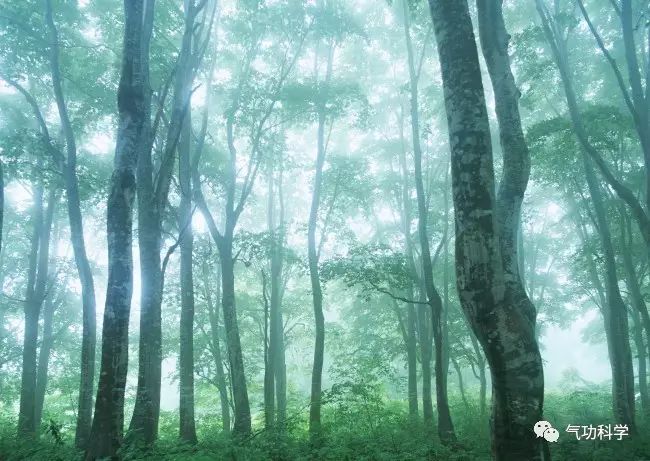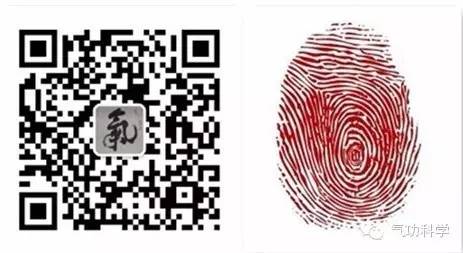Qigong in China has a long history, originating in ancient times and evolving over thousands of years. After the Han Dynasty, various schools of Qigong gradually formed, influenced by Confucianism, Buddhism, Daoism, and medicine. It may be associated with Confucianism as a foundation for self-cultivation; linked to religion as a means to attain immortality; rooted in medicine as a method for treating diseases; or integrated into martial arts as a treasure for overcoming enemies. Each school has developed numerous branches due to historical transmission and changes. Qigong is like a towering tree, with deep roots and lush leaves, its branches and leaves intertwining in a dazzling array. Tracing the development of Qigong aims to summarize its evolutionary patterns from the historical river of Qigong’s development, helping us grasp the correct direction for leading Qigong into the future. The history of Qigong can be divided into three periods: the Era of Primitive Qigong, the Era of Religious Influence and Sectarian Disputes in Qigong, and the Era of Scientific Development in Qigong.

The Era of Primitive Qigong refers to the period from ancient times to the Qin Dynasty. During this time, Qigong had little mystical color, with minimal religious influence, preserving the initial purity and simplicity of Qigong, hence the term Primitive Qigong Era.
1. Qigong Originates from Nature
The exact formation time of Qigong is not documented in writing, and can only be inferred from indirect literature. From archaeological findings in China, pottery unearthed in Qinghai Province in the 1970s contained millet, confirmed by isotopic testing to be from five thousand years ago. The pottery depicts people in standing postures, resembling the current standing postures. Thus, it can be inferred that Chinese Qigong has at least a five-thousand-year history.
According to the earliest Chinese historical text, the Shang Shu, it is recorded that over four thousand years ago, during the reign of Emperor Tang, the Central Plains region of China experienced devastating floods. Due to the humid and rainy climate at that time, people suffered from stagnation of qi and blood, leading to widespread joint and body pain. The Lü Shi Chun Qiu states: “In ancient times, during the reign of the Tao Tang, the yin was often stagnant and accumulated, the waterways were blocked, and the people’s qi was stagnant, causing their muscles and bones to contract and not function properly, hence they danced to express it.”
It is evident that in ancient human life, people discovered through practice that certain movements, breathing, and sounds could regulate certain functions of the body. For example, stretching limbs could dissipate heat, curling limbs could ward off cold, the sound of “ha” could release heat, the sound of “hei” could generate strength, and the sound of “xu” could relieve pain. Moreover, these spontaneous actions to regulate bodily functions gradually formed graceful dance movements, which were utilized by shamans of primitive religions to “serve the gods” and communicate between humans and deities. The Shuo Wen Jie Zi states: “A shaman is one who serves the formless, using dance to summon the gods.” The Shang Shu also records: “Shamans serve the gods with song and dance, hence song and dance are customs of shamans.” This kind of “dance” is similar to today’s fitness Qigong.
In ancient times, without the formation of written language, Qigong lacked systematic summarization, but it originated from nature, pure and simple.

Ancient texts contain numerous records indicating that Qigong practice was quite prevalent in ancient times. The Suwen discusses the different self-cultivation methods and levels of cultivation of ancient realized beings, supreme beings, sages, and wise men: “In ancient times, there were realized beings who grasped heaven and earth, controlled yin and yang, breathed in essence, and maintained their spirit independently, their muscles unified, thus they could live as long as heaven and earth, without end. This is their way of life. In the middle ages, there were supreme beings who possessed pure virtue and followed the way, harmonizing with yin and yang, adjusting to the four seasons, distancing themselves from the world, accumulating essence and spirit, roaming between heaven and earth, perceiving beyond the eight directions, thus enhancing their lifespan and strength, returning to the realized beings.”
Furthermore, there were sages who lived in harmony with heaven and earth, followed the principles of the eight winds, adapted their desires to worldly matters without anger, and did not wish to separate from the world, wearing clothing and not wanting to be seen by the world, not laboring physically, and having no worries in thought, focusing on tranquility and self-contentment, their bodies not decaying, and their spirits not dispersing, thus they could live for hundreds of years.
Then there were wise men who followed the laws of heaven and earth, resembling the sun and moon, discerning the stars, following yin and yang, distinguishing the four seasons, and aligning with the ancient way, thus they could also enhance their lifespan.
It is said that during the Yin Dynasty, Peng Zu lived for eight hundred years, and his secret to longevity was “regularly consuming cinnamon fungus and skillfully guiding qi.” The Yun Ji Qi Qian records: “Master Rong Cheng, claiming to be the teacher of the Yellow Emperor, met King Mu of Zhou, and was adept at guiding and directing, taking essence from the mysterious female, the key to the spirit of the valley is immortality, preserving life and nurturing essence, turning white hair back to black, and regrowing teeth.” This indicates that during the Yin Dynasty, methods of Qigong guidance and health preservation were already popular.

2. The Hundred Schools of Thought Emphasize Qigong Practice
From the Xia, Shang, and Western Zhou Dynasties to the Spring and Autumn and Warring States Periods, this was the flourishing period of Primitive Qigong. During this time, “the hundred schools of thought contended, and culture and scholarship flourished unprecedentedly, and Qigong also received corresponding development and attention from various aspects. The great prosperity of Qigong was mainly reflected in two aspects: first, the number of people practicing Qigong increased, and the content became richer; second, Qigong theory gradually formed, providing clearer explanations and interpretations of the mechanisms of Qigong.
Firstly, Daoism established the academic foundation for Qigong health preservation based on the thoughts of Laozi and Zhuangzi. Laozi in the Dao De Jing states: “Empty your heart, fill your belly” (Chapter 3); “Soft and yielding, use it without effort” (Chapter 6); “Reach the utmost emptiness, maintain tranquility” (Chapter 16); “Focus your qi to become soft, can you be like a baby?” (Chapter 10) and other discussions on practice. Zhuangzi in Zhuangzi discusses “breathing in and out, expelling the old and taking in the new, stretching like a bear and a bird, this is merely for longevity. This is the practice of guiding and nurturing, favored by those who seek longevity like Peng Zu.” In Zhuangzi, Zhuangzi, through the mouth of Guang Chengzi, expounds the essence of ancient Qigong practice: “Profoundly deep, the ultimate way, dim and silent, without sight or sound, embrace the spirit with stillness, the form will naturally align, must be still and clear, do not labor your form, do not disturb your essence, thus you can attain longevity; with no sight for the eyes, no sound for the ears, no knowledge for the heart, your spirit will guard the form, and the form will attain longevity.”

Confucianism regards “ritual” as a major method for regulating the heart in Qigong practice. Confucius said: “The wise enjoy water, the benevolent enjoy mountains; the wise are active, the benevolent are still; the wise are joyful, the benevolent are long-lived” (from Lunyu, Chapter Yongye). This means that the benevolent regulate their hearts with ritual, restraining themselves to act with propriety, thus their hearts are tranquil, still as a mountain, and therefore the benevolent live long. Thus, from the perspective of Qigong practice, “benevolence” is not only a noble virtue but also a high realm of Qigong. In terms of specific operational methods, it mainly emphasizes sitting in stillness. The Zhuangzi records Confucius’s explanation of “heart fasting”: “If you focus your intention, you will hear with your heart rather than your ears; if you listen with your heart, you will listen with your qi; listening stops at the ears, the heart stops at the symbols. Qi is that which is empty and awaits things.” The Zhuangzi describes the method and realm of “sitting and forgetting”: “Let go of the physical body, discard cleverness, leave behind form and wisdom, and unite with the great flow; this is called sitting and forgetting.”
Mencius advocated nurturing the hao ran qi. In Mencius, Gongsun Chou states: “I am good at nurturing my hao ran qi… Its qi is vast and strong, nurtured straight without harm, thus it fills the space between heaven and earth.” The Da Xue, one of the Four Books, describes the “stillness” in Qigong practice: “Only after knowing can one be settled; only after being settled can one be still; only after being still can one be at peace; only after being at peace can one contemplate; only after contemplation can one attain.”

In terms of medical Qigong, the medical theories and techniques of that time had developed significantly, leading to the creation of the first existing classical text of Chinese medicine, the Huangdi Neijing. In the Suwen, it is recorded: “Tranquility and emptiness, true qi follows, spirit guards within, how can illness arise?” and “Breathe in essence, maintain spirit independently, muscles unified.” This vividly describes the methods and realms of Qigong practice. During the Neijing period, Qigong was already regarded as an important means and method for preventing and treating diseases. The Suwen summarizes five effective medical measures from ancient times: stone acupuncture, poisons, moxibustion, nine needles, and guiding and pressing, among which guiding and pressing is the ancient medical Qigong.
Other schools of thought also placed great importance on the practice and study of Qigong in their exploration of the relationship between humans, nature, and society. Among them, the most comprehensive and earliest records are found in the Guanzi. The Guanzi scientifically and materially explains the functional effects of Qigong practice, stating: “Think and think again, and think again; if thought does not flow, the spirits will connect, not by the power of spirits, but by the extremity of essence and qi.” It points out: “When a person is correct and still, the skin is relaxed, the ears and eyes are sharp, and the muscles are strong and bones are robust.”
During the Warring States period, Lü Buwei pointed out in the Lü Shi Chun Qiu the importance of nurturing the essence, qi, and spirit of the human body: “When the spirit is at peace, the body can gain longevity; when the body does not move, the essence does not flow, and when the essence does not flow, the qi becomes stagnant.” He proposed that the essence of practice lies in the combination of movement and stillness: “What should be moved should be still, and what should be still should be moved.”

In summary, the Qigong of this period has two characteristics: first, it treats Qigong as a discipline, emphasizing the unity of scholarship and self-cultivation, stressing that any study must regard practice as fundamental, improving physical quality through practice to deeply grasp and understand the material world and human life. Second, the classical Qigong studies formed during this period maintained pure and simple characteristics, with little theological color. For example, the tranquil state presented during the practice process and the resulting basis for human life are referred to as “Dao,” “Essence,” “Virtue,” “Center,” “Unity,” and “Emptiness”; those who achieve extraordinary functions through practice are called “realized beings,” “supreme beings,” and “sages”; the mechanisms explaining the extraordinary intelligence produced through practice are described as “guarding pure qi,” “harmony of the great void,” and “extremity of essence and qi.” In terms of principles, the theories of yin and yang, five elements, original qi, essence, and spirit are used to explain Qigong methods and effects, revealing the mysteries of human life to a certain extent, forming the foundation of traditional Qigong studies in China.
(Source: Zhang Wenchun, Doctoral Dissertation, Nanjing University of Traditional Chinese Medicine, “Research on Qigong Practice Theory Based on the Trinity of Form, Qi, and Spirit”)
Source: Jiangxi University of Traditional Chinese Medicine Qigong Science Research Institute
For more exciting content, please follow Qigong Science


